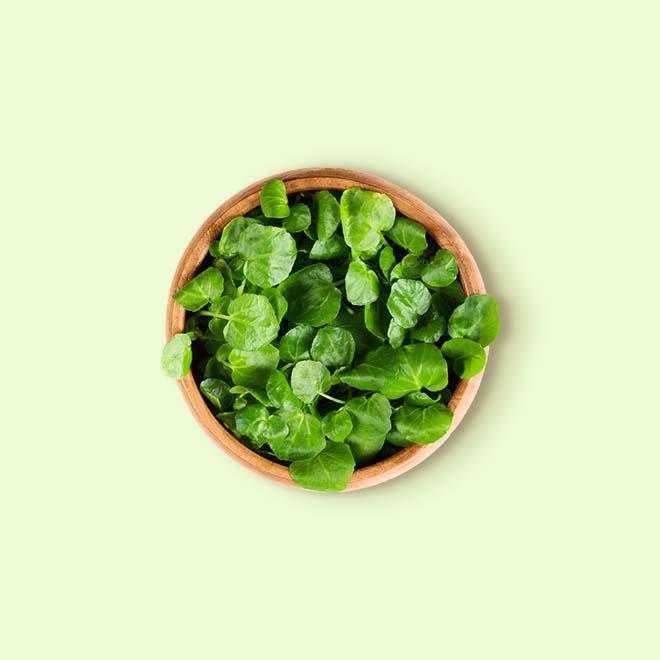Watercress




Watercress is a species of aquatic flowering plant in the cabbage family. It is native to Europe and Asia, where it thrives in cool, shallow streams and freshwater springs. Edible from root to stem, its small, round leaves and hollow stems have a distinct peppery or slightly mustardy flavor.
Watercress is one of the oldest known leaf vegetables consumed by humans, enjoyed by ancient Greeks and Romans. It can be used raw or cooked, in sandwiches and soups or just as a garnish.
When buying watercress, look for vibrant green leaves and crisp stems that break easily. Choose bunches with mostly whole stems, not many broken or wilted ones. Opt for smaller to medium bunches, as larger ones might have older leaves.
Watercress should be stored in a refrigerator loosely wrapped in a damp paper towel. To prevent wilting, place the wrapped bunch in a container with an inch of cold water (like a vase). Refresh the water in the container every day or two to keep it clean and crisp.
Steep watercress leaves in water or oil for a subtle peppery flavor, perfect for salad dressings or dips.
Offer washed watercress leaves as a healthy and enriching treat for your furry friends.
Plant watercress near areas prone to pests like mosquitoes or aphids, as its scent may deter them.
Hippocrates, the father of medicine, valued its medicinal properties, while Ancient Greeks believed it boosted wit (though evidence may be shaky!). Victorians, ever the romantics, thought it could banish freckles (spoiler alert: it doesn't).
In Europe during the Middle Ages, watercress wasn't just food, it was currency! Farmers could pay their taxes with bundles of this prized green, and it was often traded in markets alongside other goods.
Believe it or not, Victorians believed watercress could cure melancholy! This "peppery panacea" was thought to lift spirits and chase away the blues, offering a natural remedy for the woes of the era.
Watercress loses its vibrant color and peppery flavor if cooked for too long. A quick stir-fry or simmer is usually enough.
Watercress wilts quickly when exposed to heat, so add it towards the end of cooking or use it raw.
Forget fancy cleanses, watercress is a natural detox champ! Its sulfur compounds help stimulate the liver and aid in removing toxins from the body.
Watercress is brimming with antioxidants, like vitamin C and beta-carotene, which help combat free radicals and may reduce the risk of chronic diseases like heart disease and cancer.
It's a low-calorie superstar packed with essential vitamins and minerals, including vitamin K for bone health, folate for brain function and fetal development, and iron for energy production.
Corrections or improvements? Email us at
content@sidechef.com